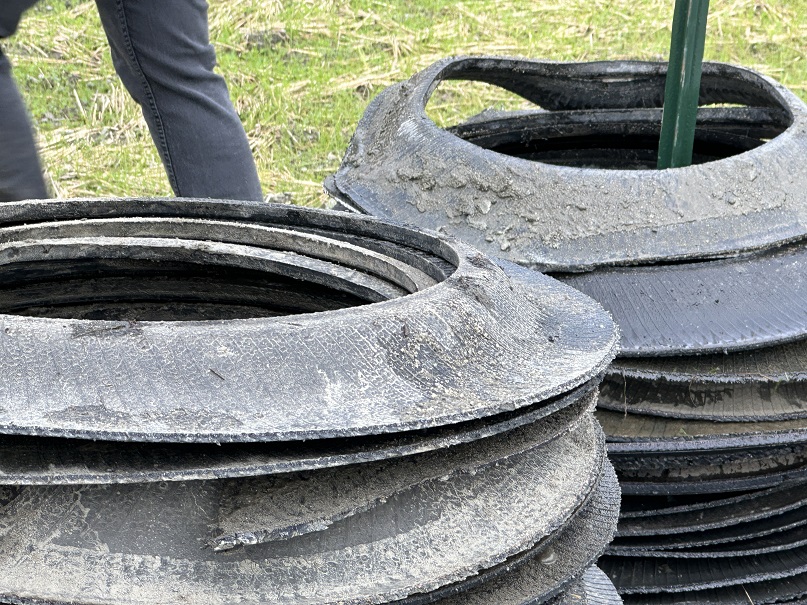
New Program Looks to "Cut" Tire Waste and Prevent Mosquito Breeding
Old and used tires have been used for covering silage bunk covers because they are plentiful, heavy and do not have sharp edges. They do, however, hold water and mud, making the job of moving the tires messy, tiresome, and smelly. Most important, the water inside the tires breeds mosquitoes continuously during the warm summer months. The mosquitoes that breed in tires can carry West Nile virus and other human and veterinary diseases, as well as being a terrible nuisance.
Sidewalls cut from old tires are a good solution to these problems. A machine designed for cutting tires cuts the 2 sidewalls from a single tire, leaving the tread (and metal bits) to be disposed of separately.
Here’s why it’s a great idea to use sidewalls:
- They are easily stacked on a post and moved with a forklift when not on the bunk.
- They are much lighter than whole tires, especially tires containing water and mud, making them much easier to place and move as needed.
- Sidewalls can be overlapped to add extra weight, without being difficult to handle.
- They don’t hold any water, so no longer a breeding ground for mosquitoes.
They are lighter than whole tires, as only the sidewall of the tire is used, so more of them may be needed for the job, with closer spacing or overlapping. Larger sidewalls are recommended for use along the tarp edges to weight it down.
Where Can I Get Sidewall Tires?
The Vermont Agency of Agriculture has purchased a Super Slicer, a tire sidewall cutter that can remove approximately 50-60 sidewalls per hour. We are creating a program to generate a supply of sidewall tires for farmers who want to try them. Let us know if you are interested in trying sidewalls for your bunk covers.
For more information, please contact
- Steve Dwinell, PHARM Division Director, Steve.Dwinell@Vermont.gov (802) 522-6973
- Patti Casey, Environmental Surveillance PD, Patti.Casey@Vermont.gov (802) 522-6858

